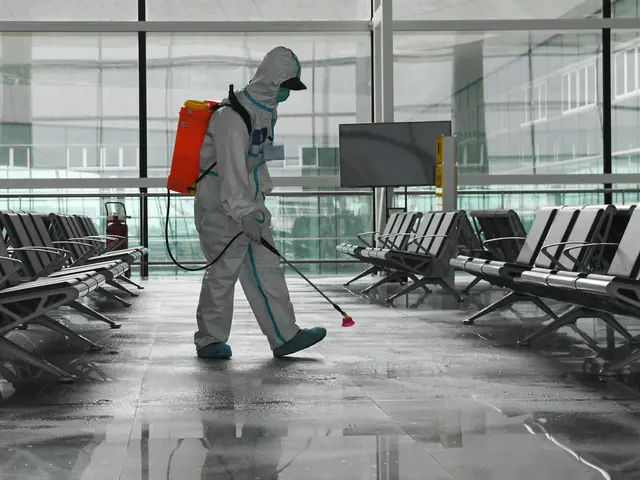Researchers from Australia and China released a joint paper on Environment International on Thursday, arguing that the airborne transmission of the disease was underestimated.
Professor Lidia Morawska from Queensland University of Technology (QUT) in Australia and Professor Junji Cao from the Chinese Academy of Sciences said that with evidence of COVID-19 airborne transmission mounting, public health governing bodies should be paying close attention.
According to the authors, separate studies in Hong Kong and Canada showed that during the 2003 outbreak, COVID-19's "predecessor" SARS.CoV-1, was spread through the air.
"Now is the ideal time to conduct research into how viruses can travel on the airflow, because there are many similarities between the coronavirus that caused SARS and the COVID-19 coronavirus and therefore it is highly likely that COVID-19 spreads by air," Morawska said.
Biosecurity expert Professor Raina MacIntyre from University of New South Wales (UNSW) agreed that the link demanded more attention than it is getting.
"The evidence published on The Lancet shows there are more viruses in patient's lungs than their throat area, supporting the airborne transmission theory (of COVID-19)," MacIntyre told Xinhua in a telephone interview.
Outbreaks of COVID-19 on multiple cruise ships which infected lots of people could be explained by the airborne transmission of the virus, according to Morawska.
"On numerous cruise ships where thousands of people onboard were infected, many of the infections occurred after passengers had to isolate in their cabins even though hand hygiene was implemented," she explained.
"Therefore, the ventilation system could have spread the airborne virus between the cabins."
Due to the urgency of the matter, Morawska said the health authorities should take immediate precautions on the presumption of airborne transmission.
"Air transmission research should be undertaken now and its likelihood as a means of spread should be taken seriously with due precautions taken now," Morawska said.
"We have already lost valuable time by ignoring this method of spread and we should act on the presumption that COVID-19 is spreading on the air."
The professor suggested to increase ventilation of indoor spaces, avoid staying in another person's direct air flow, and minimize the number of people sharing the same environment.
The research, "Airborne transmission of SARS-CoV-2: The world should face the reality," is scheduled to be published in Environment International in June.
 简体中文
简体中文

